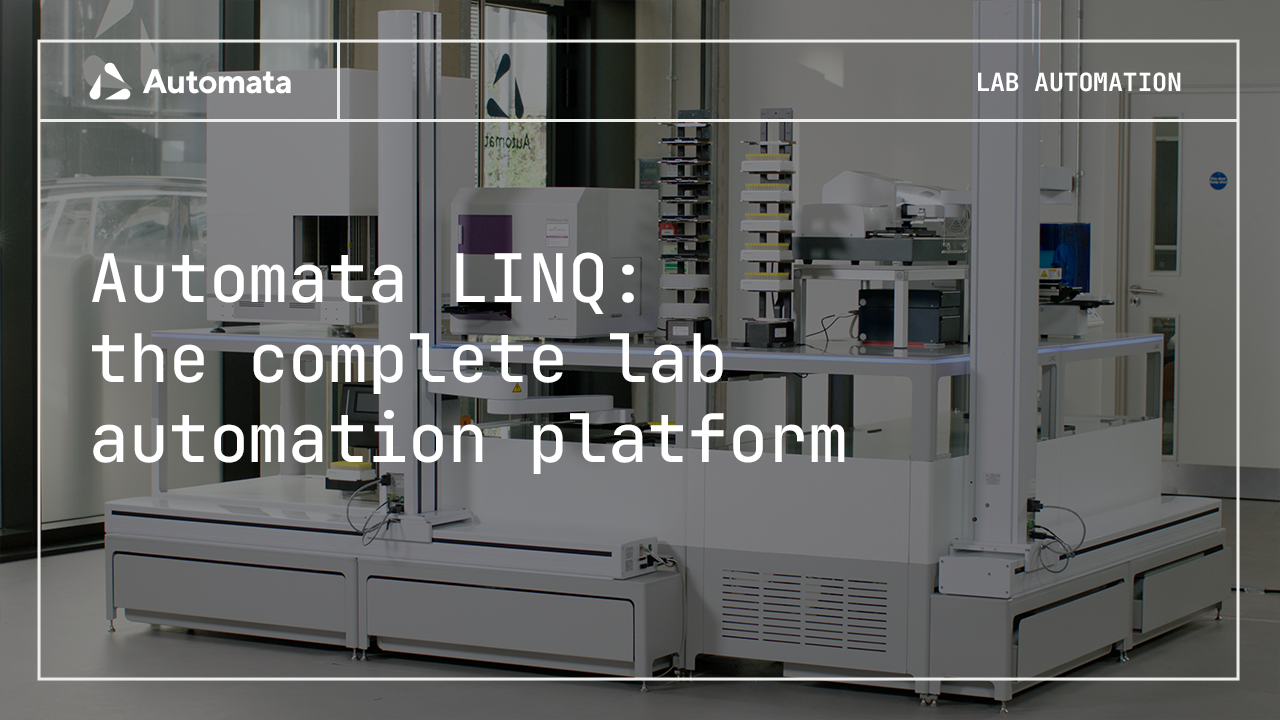Achieving high throughput proteomics with automation

Proteomics plays a crucial role in various fields, including healthcare and agriculture 1,2. However, scientists face many challenges during high-throughput proteomics workflows.
Automation has emerged as a solution to many of these issues, streamlining different stages of proteomics workflows and significantly benefiting scientists who adopt it.
This article will discuss the applications and challenges of modern proteomics and how automated proteomic workflows solve many of these challenges, allowing researchers to achieve their goals faster.
What is proteomics?
Proteomics is the large-scale study of proteins within a biological system. It encompasses protein identification, quantification, functionality, and modification 3. This discipline is of broad relevance in healthcare research and has numerous biotechnology applications.
What are some of the common challenges in proteomics?
Despite recent advances in high-throughput proteomics, many limiting factors prevent scientists from taking full advantage of its capabilities.
Human error and other challenges associated with manual sample preparation
Workflows for proteomics are often time and labour-intensive 4. This can mean hours of manual pipetting, which is prone to errors that can significantly impact results. Furthermore, by occupying researchers’ time, these workflows divert scientists from higher-value tasks, such as thinking up new ideas and analysing data.
Reproducibility
Reproducibility is a perennial issue in many domains of research. In proteomics, problems with reproducibility stem from differences in sample preparation and instrumentation, among other factors. Poor reproducibility slows research efforts, hinders inter-institutional collaboration, and casts doubt upon discoveries and their real-world applications 5.
Data quality
Poor data quality can make it impossible to derive meaningful conclusions from proteomics experiments. Contamination and inconsistencies in sample preparation are primary culprits leading to unusable datasets. Low data quality causes significant time loss in research because it can necessitate repeat experiments and cause scientists to pursue false leads.
How lab automation can help
Lab automation can streamline many processes involved in proteomics sample preparation 6. These include:
- Storage and aliquoting: High throughput proteomic analyses often require large volumes of samples to be processed simultaneously. Without automation, this can mean samples are stored at suboptimal conditions and degrade while in line to be processed. Automation can streamline sample retrieval from storage, minimising degradation and ensuring samples are accurately aliquoted for future use.
- Protein extraction and quantification: The use of automated liquid handlers can facilitate standardised procedures for protein extraction and quantification. This leads to faster processing and can help establish inter- and intra-institutional consistency.
- Mass spectrometry: Automation in proteomics enables accurate and consistent dilution of samples for mass spectrometry. Accurate injection of samples is a crucial step in a mass spectrometry workflow. While not the most technically challenging step, automation ensures this process is performed consistently across samples and far faster than manual injection.
The benefits of automated proteomic sample preparation
Automation can solve many of the challenges faced during high throughput proteomics experiments, offering many benefits to researchers 7. These include:
- Faster workflows: Research progresses faster with automated workflows. This allows laboratories to achieve their research goals quickly.
- Enabling high throughput: Automation allows workflows to be scaled up to match a high volume of samples. This means laboratories can pursue more ambitious projects and achieve more statistically powerful results.
- Reducing human error: Automated proteomics workflows significantly reduce the chance of human error. This means more reliable data and frees scientists to focus their efforts on other tasks.
- Increased efficiency: Automated workflows help optimise the use of reagents and reduce the need for repeat experiments, which increases laboratory time and resource efficiency.
- Enhanced safety: Automating liquid handling reduces the risk to laboratory personnel by reducing the chances of repetitive strain injury and accidents leading to exposure to potentially hazardous reagents.
Practical applications of proteomics
Proteomics can be applied to a range of research and industrial applications.
- Drug discovery: Proteomics helps researchers to identify potential targets for new drugs. Comparative proteomics allows researchers to see broad changes in the proteome caused by a candidate drug.
- Agriculture: Proteomics can help with trait discovery, allowing for the selection and propagation of optimal strains. It can also be used to discover the mechanisms of pest resistance to pesticides and allow scientists to monitor plants‘ adaptability to climate change 2.
- Medicine development: Proteomics allows researchers to understand the mechanism of action of novel medicines and determine whether a drug interacts with its intended target 8.
- Biomarker discovery: Proteomics facilitates biomarker discovery by allowing researchers to gain insights into how disease states differ from healthy tissue at the molecular level. Biomarkers are essential diagnostic tools and can help determine the best course of action for patient care
Get in touch
Automation in proteomics is revolutionising many academic and industrial fields. Contact us to discover how automation can help you streamline your research and achieve your goals faster.
LINQ: The cloud-based automation from Automata
Automata’s LINQ platform houses and connects your instruments on a space-saving, robot-enabled lab bench, while allowing you to design, schedule and manage workflows remotely via cloud-based software.
Underpinned by your lifetime support team of scientists, engineers and automation experts, LINQ is the last automation solution you’ll ever buy.

References

